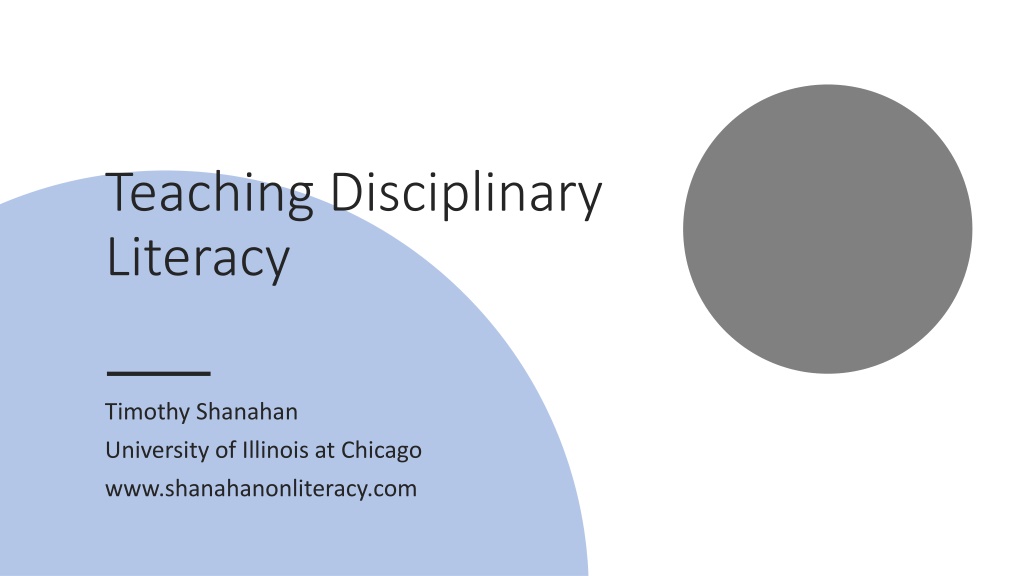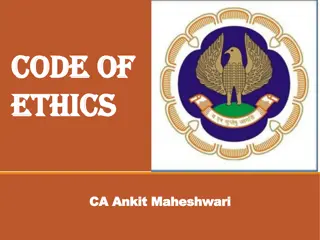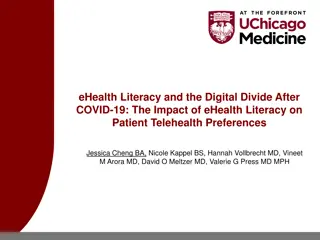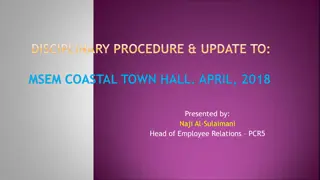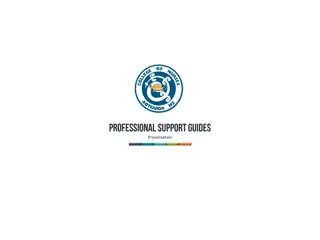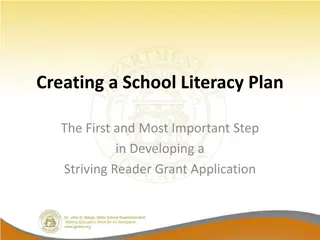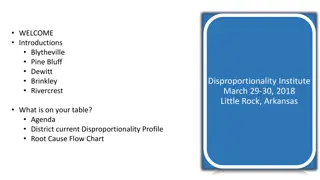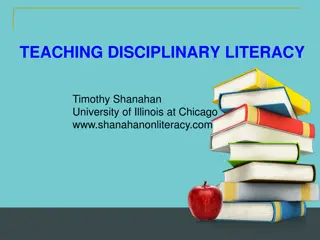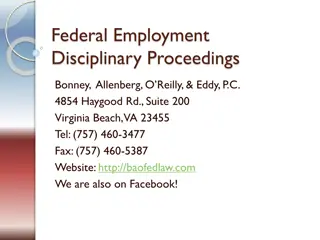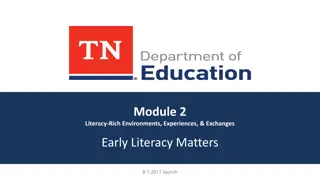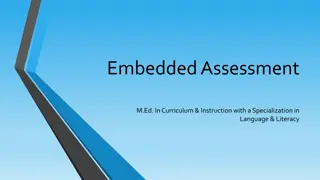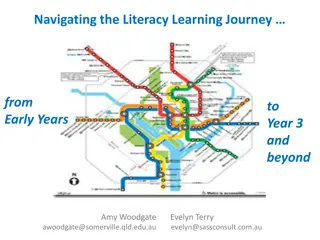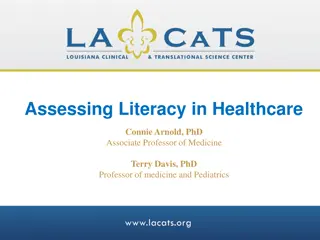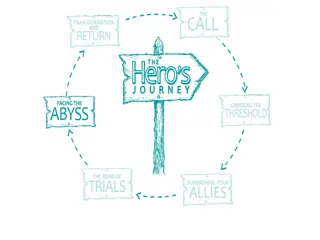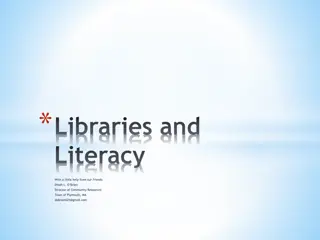Understanding Content Area Literacy vs. Disciplinary Literacy
Content area literacy focuses on improving reading comprehension and study skills across disciplines, while disciplinary literacy delves into discipline-specific ways of using text to create and evaluate knowledge. Expert reader studies and the specialization of literacy further highlight the nuances of these literacy concepts.
- Literacy Concepts
- Reading Comprehension
- Disciplinary Studies
- Expert Reader Analysis
- Literacy Specialization
Download Presentation

Please find below an Image/Link to download the presentation.
The content on the website is provided AS IS for your information and personal use only. It may not be sold, licensed, or shared on other websites without obtaining consent from the author. Download presentation by click this link. If you encounter any issues during the download, it is possible that the publisher has removed the file from their server.
E N D
Presentation Transcript
Teaching Disciplinary Literacy Timothy Shanahan University of Illinois at Chicago www.shanahanonliteracy.com
Audience Questions What is content area reading/literacy? What is disciplinary literacy? How is your school/district addressing these?
Content area literacy has long championed the idea of every teacher a teacher of reading The approach emphasizes teaching English Language Arts with content texts Focus is on making students better students by building up their reading comprehension and study skills with content textbooks Goal: To make students better students What is the same across the disciplines? Content Area Literacy
Disciplinary Literacy is a completely different concept It is not about bringing ELA standards, methods, or approaches to the subject area classroom Each discipline has its own ways of using text to create, disseminate, and evaluate knowledge, and it is this that the new standards are asking us to teach Goal is to apprentice students into the disciplines What is different across the disciplines? Disciplinary Literacy
Studies that compare expert readers with novices (Bazerman, 1985; Geisler, 1994; Wineburg, 1991, etc.) Research Sources of Disciplinary Expert Readers Functional Linguistics Functional linguistics analyses of the specialized literacy/language practices used in the disciplines (Fang, 2004; Halliday, 1998; Schleppegrell, 2004, etc.)
Example of Expert Reader Study Wineburg s study of history reading: Sourcing: considering the author and author perspective Contextualizing: placing documents within their historical period and place Corroboration: evaluating information across sources
Increasing Specialization of Literacy Disciplinary Literacy Intermediate Literacy Basic Literacy
Content area reading is based on the idea that reading and writing are highly generalizable skills Generalizable vs. Specialized Skills Thus, literacy can be taught with the texts and content of any field and the same approaches can be applied across the disciplines (e.g., SQ3R, KWL, summarization) But disciplinary literacy focuses not on what is the same across the disciplines, but what is unique or specialized
Content area reading provides students with a toolbox of strategies to use whenever text is encountered Generalizable vs. Specialized Skills (cont.) Disciplinary literacy strategies emerge from the nature of the content and the epistemology of the discipline
Chemistry Summarization Chemistry Summarization Substances Properties Processes Interactions
Chemistry Summarization Chemistry Summarization Atomic Expression Substances Properties Processes Interactions
Students need to learn terminology in all fields The same study techniques would accomplish this no matter what the words Graphic organizers, semantic maps, word sorts, rate knowledge of words, analyze semantic features of words, categorizing/ mapping words, synonym webs, etc. Content Area Vocabulary
No differences in how vocabulary is learned, but the content of vocabulary curriculum needs to differ The nomenclature of each field differs in nature Science, for example, emphasizes words intentionally constructed from Greek and Latin roots (precise, dense, stable, interrelated meanings that are recoverable): deoxyribonucleic acid History, on the other hand, emphasizes the meanings of metaphorical terms and words with a political point of view: Civil War, War Between the States, War of Northern Aggression Disciplinary Literacy Vocabulary
Literature: words that evoke emotion, the senses, human relationships The nomenclature of each field differs in nature Example . where I would have lived through all that impassioned, insane joy of the hunt, when as I climb the rock my face contorted, gasping, shouting voluptuously, senseless words . (Nabokov, Father s Butterflies) Disciplinary Literacy Vocabulary (cont.)
Different disciplines emphasize different words But the frequency or value of prefixes, suffixes, and combing forms differ by discipline, too (Gutlohn & Besselieu, 2014) Examined frequency of 4500 multisyllabic content words to identify morpheme frequency Half the morphemes occurred across contents, but many were more specialized Example: these were only frequent in science: trans-, ism, chem, electro/electr, endo, hydro, micro, oid, photo, scope, therm/thermo Frequency of Morphology Differs by Discipline
Prefixes ELA Math Science Soc Stuides com- X X X X con- X X X X de- X X X X dis- X X ex- X X X X in- X X X X inter- X pre- X pro- X X X re- X X X X sub- X X trans- X un- X
Derivational Suffixes ELA Math Science Soc Stuides -al X X X X -ar X X -ary X X -ate X X X X -ation X X X X -ent X X X -ic X X X X -ism X X -ist X -ity X X X X -ive X X X X -ize X X X -ment X X X X
Derivational Suffixes (cont.) ELA Math Science Soc Stuides -or X X -sion X X X X -tion X X X X -ture X X
Combining Forms ELA Math Science Soc Stuides ana X arch X auto X bio X X chem X cracy, crat X dem-, demo X eco X electro, elect X endo X geo X X gon X gram X
Combining Forms (cont.) ELA Math Science Soc Stuides graph X X hedron X hydro X logy (ology) X X X meter, metr X X micro X nym, onym X -oid X para X X photo X poly X scope X sphere X X
Combining Forms (cont.) ELA Math Science Soc Stuides sym- X syn- X X therm, thermo X tri- X
Specialized Reference Works Students usually learn to read dictionaries in primary grades But by secondary school students should be relying on reference works that are specialized to a field of study
Sugar: a sweet crystalline substance obtained from various plants, especially sugar cane and sugar beet, consisting essentially of sucrose, and used as a sweetener in food and drink. General Dictionary Example
Sugar (saccharide): Any of a group of water soluble carbohydrates of relatively low molecular weight and having a sweet taste. The simple sugars are called monosaccharides. More complex sugars comprise between two and ten monosaccharides linked together: disaccharides contain two, trisaccharides, three, and so on. The name is often used to refer specifically to sucrose (cane or beet sugar). The suffix -ose is used in biochemistry to form the names of sugars. Science Dictionary Example
Sugar (saccharide): Any of a group of water soluble carbohydrates of relatively low molecular weight and having a sweet taste. The simple sugars are called monosaccharides. More complex sugars comprise between two and ten monosaccharides linked together: disaccharides contain two, trisaccharides, three, and so on. The name is often used to refer specifically to sucrose (cane or beet sugar). The suffix -ose is used in biochemistry to form the names of sugars. Science Dictionary Example
General Dictionary Example Battleship: Any of a class of warships that are the most heavily armored and are equipped with the most powerful armament
Battleship: U.S. battleship is usually distinguished from its foreign Counterparts by its heavy gun armament, sturdy protection, and relatively slow speed. Three distinct subtypes: 27 mixed-battery ships built 1888-1908; 22 all-big-gun dreadnoughts (1910-1923); and 10 fast battleships (1937-1944). Stricken from the Navy s lists in January 1995. As ship killers, the battleships saw little action; yet they ultimately justified their existence in important subsidiary missions, the most significant being gunfire support for troops ashore. History Dictionary Example
Battleship: U.S. battleship is usually distinguished from its foreign Counterparts by its heavy gun armament, sturdy protection, and relatively slow speed. Three distinct subtypes: 27 mixed-battery ships built 1888-1908; 22 all-big-gun dreadnoughts (1910-1923); and 10 fast battleships (1937-1944). Stricken from the Navy s lists in January 1995. As ship killers, the battleships saw little action; yet they ultimately justified their existence in important subsidiary missions, the most significant being gunfire support for troops ashore. History Dictionary Example
Cultural Differences Across the Disciplines The differences among the disciplines are more than content/ information differences They are separated by differences in how information is created, used, evaluated, in the nature of the language, demands for precision, etc. Disciplinary Literacy requires enculturation and acculturation
Goal: arrive at truth Importance of close reading an intensive consideration of every word in the text Rereading a major strategy Heavy emphasis on error detection Precision of understanding essential The Culture of Mathematics
Text provides knowledge that allows prediction of how the world works Full understanding needed of experiments and processes Close connections among prose, graphs, charts, formulas (alternative representations of constructs an essential aspect of chemistry text) Major reading strategies include corroboration and transformation The Culture of Science
History is interpretative, and authors and sourcing are central in interpretation (consideration of bias and perspective) Often seems narrative without purpose and argument without explicit claims (need to see history as argument based on partial evidence; narratives are more than facts) Single texts are problematic (no corroboration) corroboration) History is interpretative, and authors and sourcing are central in interpretation (consideration of bias and perspective) Often seems narrative without purpose and argument without explicit claims (need to see history as argument based on partial evidence; narratives are more than facts) Single texts are problematic (no The Culture of History History The Culture of
Science Describe/explain real phenomena in natural world Systematic experiments and observations History Describe/explain past events Analysis of multiple perspectives Epistemological Source of Cultural Differences Literature Describe/explain aesthetics of texts Analysis of text Mathematics Analytical reasoning about abstract ideas Pure thought about quantities, proportions, measures
Character Change Chart Character Change Chart What is main character like at the beginning of the story? What is the main character like at the end of the story? How has he or she changed? Crisis Given this character change, what do you think the author wanted you to learn? ________ ________________________________________________________________________ ________________________________________________________________________
American Revolution THE FALLOF FORT TICONDEROGA After the battles of Lexington and Concord, the British army stayed in Boston. The American forces camped around Boston, waiting for the British to move. Meanwhile, a young New Englander named Benedict Arnold had been appointed to lead 400 soldiers at Fort Ticonderoga in New York. After arriving there, he joined forces with Vermont s rough and rugged Ethan Allen. Allen led a group of rebels called the Green Mountain Boys. Before dawn on May 10, 1775, the Americans attacked Fort Ticonderoga. The British were sleeping peacefully. Allen woke up the commander by banging on his door and shouting, Come out of there, you old rat! The Americans captured the fort without firing a shot. Inside, they found something they needed desperately heavy iron cannons.
THE BATTLEOF BUNKER HILL A month later on the night of June 16, British troops in Boston heard strange noises on nearby Charlestown Peninsula. When the sun rose, they could not believe their eyes. The day before, the peninsula had been empty. Now its two small hills Bunker Hill and nearby Breed s Hill were alive with Americans. In just one night they had built a fort of dirt and logs on Breed s Hill. The British knew they had to attack quickly. If the Americans could drag the cannons taken at Fort Ticonderoga up to the hilltops, they would be able to pound Boston and the British ships in the harbor. On the next day 2,000 of the king s troops lined up at the base of Breed s Hill. General William Howe ordered them to march to the top and take the American fort. The Redcoats sweated heavily in the hot June sun as they struggled up Breed s Hill. In the hilltop fort, fingers tightened on triggers. Fighting to control their fear, the Americans reported their order Don t fire till you see the whites of their eyes. As the red line of troops moved closer, a gray-haired farmer prayed, I thank thee, O Lord, for sparing me to fight this day.
When the British were almost on top of them, the Americans fired. Huge gaps appeared in the line of redcoats. The surprised British fell back and then made a second attack. Again they were mowed down by American gunfire. Once more, the Redcoats front line was ripped apart by gunfire. As soldiers in the back lines advanced, they tripped over their fallen comrades. But this time the British troops reached the top. By now the Americans had run out of gunpowder and were retreating to safer ground. The canons captured at Fort Ticonderoga had never left New York. General Howe regrouped his men and sent them up the hill a third time. dead and wounded were counted, General Howe found that the victory had been too dearly bought. He had lost more than 1,000 soldiers that day. The Americans had lost over 400. By evening the British had taken over the Charlestown Peninsula. But as the conflict was remembered as the Battle of Bunker Hill. After that battle, the British would never again doubt that Americans could and would fight. Even though most of the fighting took place on Breed s Hill, this bloody
THE SECOND CONTINENTAL CONGRESS meeting in Philadelphia. This was the Second Continental Congress. John Adams asked the Congress to set up a Grand American Army with troops from every colony. To lead this army, Adams suggested a gentleman whose skill as an officer would command respect of America. The man was George Washington of Virginia. While New England went to war, representatives from the colonies were Continental Army. Washington agreed, saying he would use every power I possess for the support of the glorious cause. The Congress asked Washington to serve as commander-in-chief of the new complete freedom, from Great Britain. But the Congress was not ready to take such a step. Most Americans still felt loyal to King George III. The idea of independence scared them. Adams believed that the colonies should declare their independence, or George III. This petition asked the king to help end the war. It was called the Olive Branch Petition because the olive branch is the symbol of peace. The Congress tried to make peace and voted to send another petition to King congress. He saw the actions of the Congress as treason. In Britain the punishment of treason was death. King George refused to read the petition from what he called an illegal
WASHINGTON TAKES COMMAND As George Washington rode toward Boston he knew that the odds were against him. How, he wondered, could the colonies stand up to Britain the world s most powerful country? How could rebel farmers defeat the world s strongest army and navy? Yet Great Britain faced two large problems. One was distance America lay across a vast ocean. Sending troops and supplies across the Atlantic Ocean was both slow and costly. Britain s second problem was the size of the colonies. To crush the rebellion, the British would have to take control of a huge territory. Washington also faced great problems. The Continental Army was poorly trained and lacked supplies. The colonies did not have a navy. Worse still, many people did not support the war. Only about two fifths of the colonists called themselves Patriots and supported the fight against Britain. One fifth were Loyalists, people who felt loyal to Great Britain and opposed the war. The remaining two fifths did not take sides and could not be counted on to fight. Early in July 1775, General Washington took command of the troops camped around Boston. Everywhere he looked he saw confusion and disorder. Men obeyed only those orders they liked. Washington worked hard to bring order to the army. Soon one soldier wrote, Everyone is made to know his place and keep it It is surprising how much work has been done!
THE BRITISH LEAVE BOSTON For months nothing happened. The British hoped the Patriots would grow tired of their rebellion and go home. To Washington s dismay, many of his troops did just that. The Americans hoped that King George III would pull his troops out of Boston. Instead, he hired German mercenaries to help crush the rebellion. Mercenaries are soldiers hired to fight in another country s war. Washington desperately needed cannons to drive the British out of Boston. He finally sent a former bookseller, Henry Knox, to get the iron cannons that had been captured at Fort Ticonderoga. Somehow Knox s men loaded 59 huge cannons onto sleds. Then they dragged them for more than 300 miles (480 km) across the snowy hills and frozen rivers to Boston. On March 4, 1776, Boston awoke to a surprise. The day before, nearby Dorchester Heights had been bare hills. Then overnight those hills had sprouted cannons cannons aimed at the city. The British general announced that if the Americans did not allow him to leave peacefully, he would destroy Boston. Washington wisely agreed to let the British troops move out. A few days later the redcoats sailed for Canada. With them went over 1,000 American loyalists.
A GOOD BEGINNING American Patriots were overjoyed by this news. In the past year, they had shown the British they could fight. They had formed a Continental Army with George Washington as their leader. And they had driven the British out of the colonies. Many people thought the war was over. But Washington knew better. The British would be back. Still, the Patriots had made a good beginning.
History Events Chart History Events Chart TEXT WHO? WHAT? WHERE? WHEN? WHY? Relation: 2 Relation: 3 Relation 4 Main point:
History Events Chart History Events Chart TEXT WHO? WHAT? WHERE? WHEN? WHY? Fall of Fort Ticonderoga American forces (Arnold & Allen) & British forces Americans capture Fort Ticonderoga New York May 10, 1775 Americans capture cannons Relation: Americans finally had cannons, but failed to get them from NY to Boston. Battle of Bunker Hill American forces & British forces British win the battle. Boston June 16, 1775 Americans failed to get cannons to Boston Relation: American army has to be unified if they are going to win.
Text is central to disciplines But secondary teachers are increasingly trying to teach content without text Functional linguists are showing how texts differ across disciplines
History text constructs time and causation History constructs paactors and the processes that they engaged in to move towards their goals (attributes agency) History text (Fang & Scheppegrell) Presents judgment and interpretation (argument) Often narratives with lack of clear connections to thesis
History Reading (Fang & History Reading (Fang & Schleppergrel Schleppergrel) ) Clause Circumstance Actor Process Goal Circum. 1 Over the next decade, further events steadily led to war 2 Some colonial leaders, such as Samuel Adams favored independ- ence from Britain. 3 They encour-aged conflict with British authorities. 4 At the same time, George III and his ministers made enemies of many moderate Colonists by their harsh stands
Technical, abstract, dense, tightly knit language (that contrasts with interactive, interpersonal style of other texts or ordinary language) More nouns, fewer verbs more nominalization and noun modifiers Specifics of science text Passive voice ( the atoms were excited by the heat ) Suppression of agency (readers need to focus on causation not intention) Phrasal complexity instead of clausal complexity
Sentence density: unpacking complex nouns Experimental verification of Einstein s explanation of the photoelectric effect was made 11 years later by the American physicist Robert Millikan. Every aspect of Einstein s interpretation was confirmed, including the direct proportionality of photon energy to frequency. Noun-centric prose (Fang & Scheppegrell)
Originally just titles: King, Doctor, Duke, Captain, Lord and specific places: Hampton Court, Dumbarton Castle, India Company, Greenwich Park Then concrete nouns (sand bank, flannel roller), institutions (family history), states or conditions (cancer cells, croup cases), other intangibles (heat apoplexy, quarantine restrictions) Now almost any combination and number Philae comet lander alien cover-up conspiracy theories emerge Nouns as pre-modifiers
Glass cracks more quickly the harder you press on it. Cracks in glass grow faster the more pressure is put on. Nominalization (Halliday, 2004) Glass crack growth is faster if greater stress is applied. The rate of glass crack growth depends on the magnitude of the applied stress. Glass crack growth rate is associated with applied stress magnitude.
